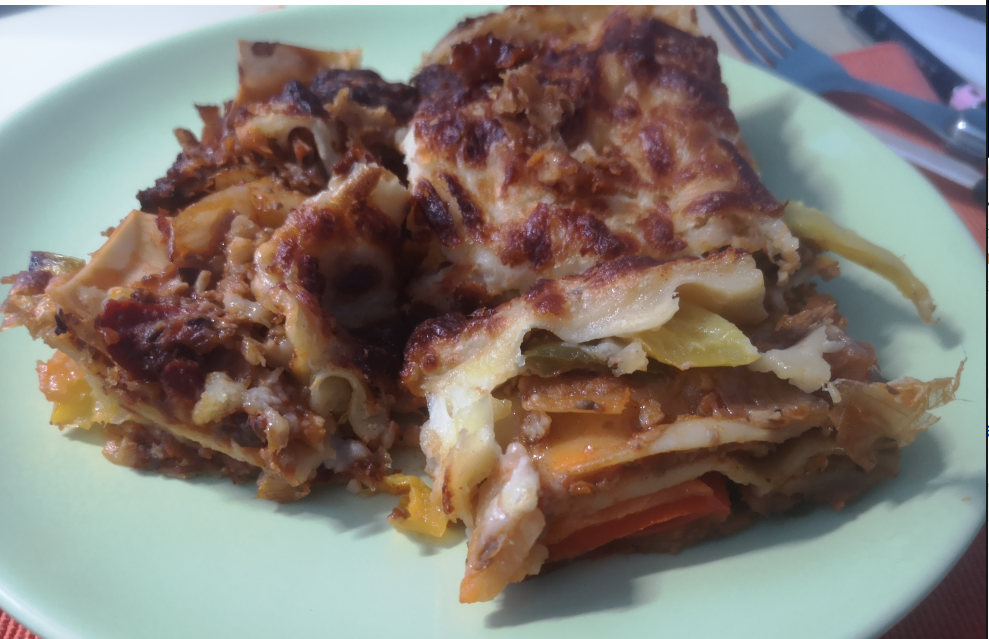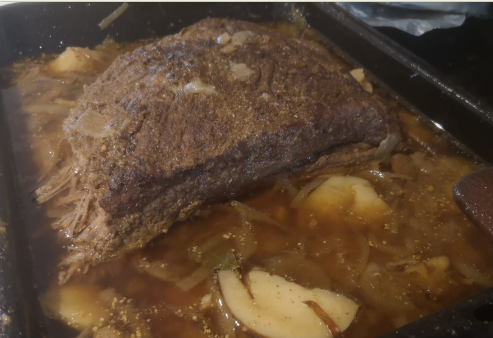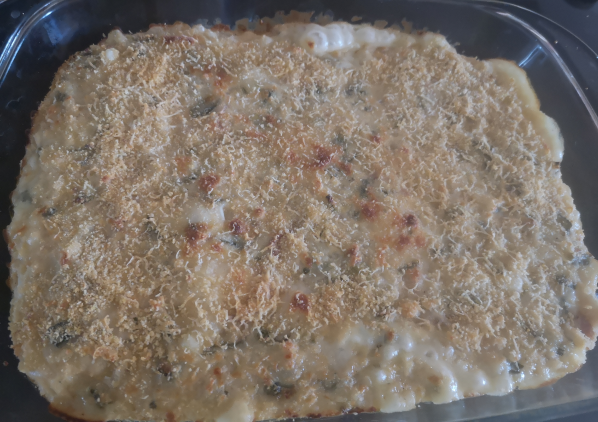Last week I fancied a lasagne but I didnt have mince meat so I decided to try a veggie version based on a vegan dish I cooked for a friend in Christmas. You replace the mince meat with shredded mushrooms.
Ingredients:
- 500gr of chestnut mushrooms
- garlic + 1 onion, oregano.
- tomato sauce, splash of read wine
- roasting veggies: 1 onions, 1 red pepper, 1 green pepper, 1 courgette, 1 potato
- milk, flour and butter for the white sauce. Nutmeg
- lasagne sheets (3 layers, 9 sheets in my case)
- grated cheese
- olive oil, salt, pepper
Process:
- Pre-heat oven at 180C. Chop all roasting veggies, coat with a bit of olive oil and a pinch of pepper/salt. Put in the oven.
- In a food processor, put all mushrooms and whizz until shredded.
- In a pan, add olive oil, once hot, and the garlic. Cook for a minute, then add the onion, cook for a couple of minutes, then add the mushrooms. Cook for a bit, then add the tomato sauce. Pinch of salt/pepper to taste. Add some oregano and splash of red wine.
- Once the mix thickens up, remove from the heat.
- Check the roasting veggies.
- Prepare the white sauce. In a saucepan at medium heat, put a big know of butter. Once melted, add 3 big tsp of flour. Mix until all combine. Then start pouring some milk, and whisk. Then keep adding milk bit by bit until you have a smooth, not very thick sauce. Add nutmeg, salt, pepper. Taste.
- Veggies should be ready.
- Time to assemble everything.
- In ovenproof glass dish, spread a bit of the white sauce (or butter) in the bottom. Then add a layer of lasagne sheets. Then add half of the mushroom mix, add half of the roasting veggines, add some white sauce. Add a new layer of lasagne sheets, the rest of the mushrooms mix and veggies, add a bit of white sauce. Finally the last layer of lasagne sheets. Pour all the white sauce and spread the grated cheese.
- Put the lasagne in the already hot oven for 30 minutes or until cheese is crispy.
Really happy with the result!




